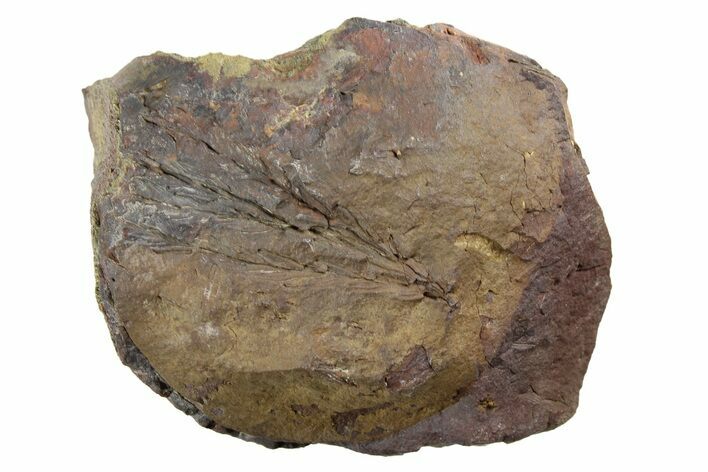This Specimen has been sold.
2.8" Fossil Leaf (Glyptostrobus?) Nodule - Hell Creek
This is a 2.8" fossil leaf nodule (Glyptostrobus sp.?) from the Late Cretaceous Hell Creek Formation on our partner's private quarry in Bowman, North Dakota.
The Hell Creek Formation produces many fossils of coniferous plants, ranging from Auracaria (monkey puzzle) to redwoods, sequoias, and bald cypresses. One such group was the genus Glyptostrobus, similar to dawn redwoods and bald cypresses. Today, Glyptostrobus only contains one species, native to eastern Asia, but the genus contained several species that existed as far back as the Late Cretaceous in North America. Successive continental drift and ice ages separated the modern G. pensilis from its now extinct relatives.
The Hell Creek Formation produces many fossils of coniferous plants, ranging from Auracaria (monkey puzzle) to redwoods, sequoias, and bald cypresses. One such group was the genus Glyptostrobus, similar to dawn redwoods and bald cypresses. Today, Glyptostrobus only contains one species, native to eastern Asia, but the genus contained several species that existed as far back as the Late Cretaceous in North America. Successive continental drift and ice ages separated the modern G. pensilis from its now extinct relatives.
Because of its age and sedimentary composition, the Hell Creek Formation has become one of the most paleontologically studied areas in the world. 158 genera of animals and 64 genera of plants are known from the formation and new discoveries are made frequently. In addition to Tyrannosaurs, Ceratopsids, and Hadrosaurs, the formation has yielded remains of amphibians, reptiles, lizards, snakes and turtles, fish and sharks, avian and non-avian dinosaurs, and mammals. The Hell Creek Formation gives the most complete understanding of the environment just before the Cretaceous-Paleogene extinction.
SPECIES
Glyptostrobus sp.?
LOCATION
Bowman, North Dakota
FORMATION
Hell Creek Formation
SIZE
2.8" wide
CATEGORY
SUB CATEGORY
ITEM
#253083
We guarantee the authenticity of all of our specimens.
 Reviews
Reviews










